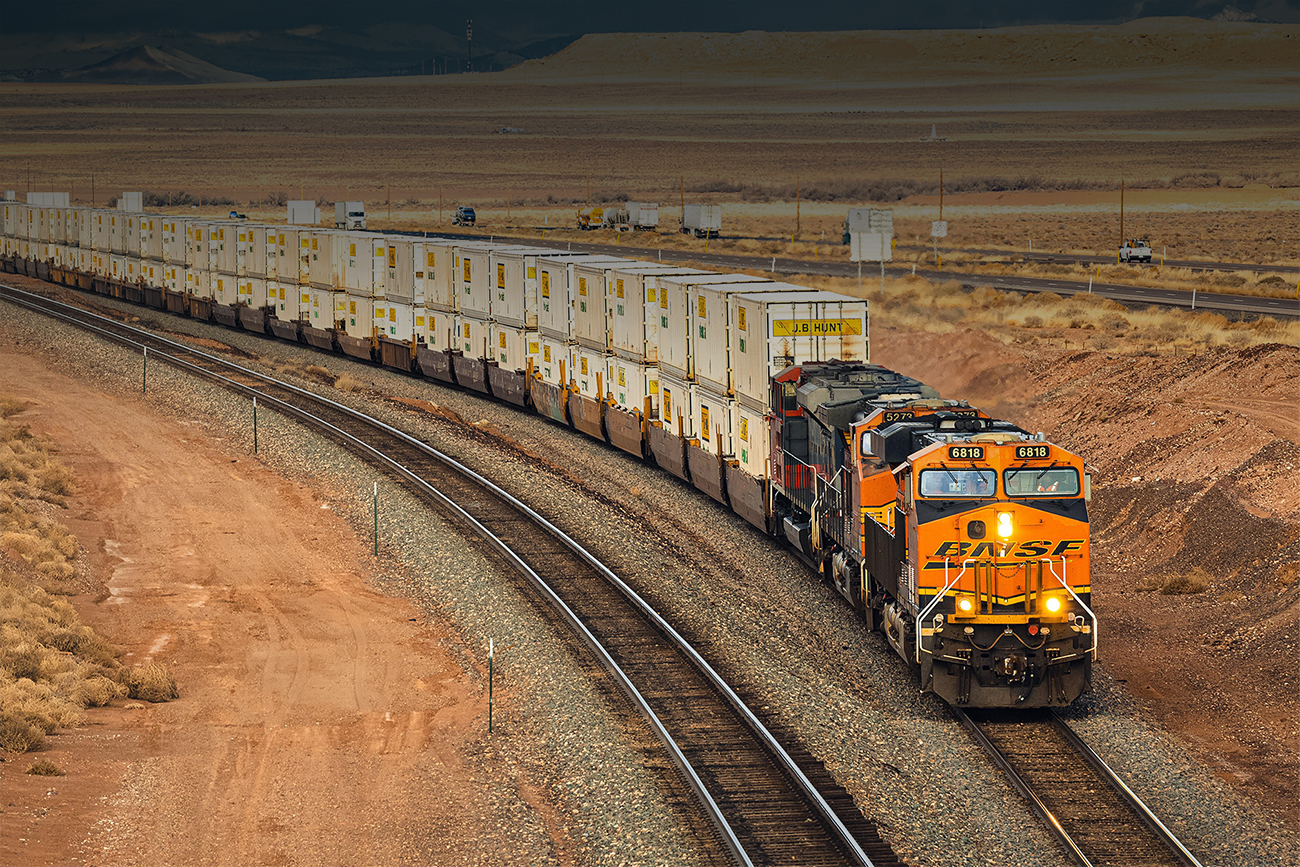
BNSF’s Flight Operations Center takes drone operations to new heights
By STEPHEN MANNING
Staff writer
BNSF’s drone program isn’t just winging it. For us, drones are vital tools that help us improve efficiency, maintain safety, and support our operations across the network.
We’ve continuously evolved the program since its inception more than 10 years ago. And now, with the launch of our Flight Operations Center, we’re letting our drone program really soar.
Located in Fort Worth, Texas, the Flight Operations Center is the heart of our Beyond Visual Line of Sight (BVLOS) drone operations. This state-of-the-art hub enables our pilots to fly drones remotely anywhere on our network, all while sitting in a controlled, distraction-free environment. It’s a game-changer for how we use drones to support intermodal inventory management, resource protection, and more.
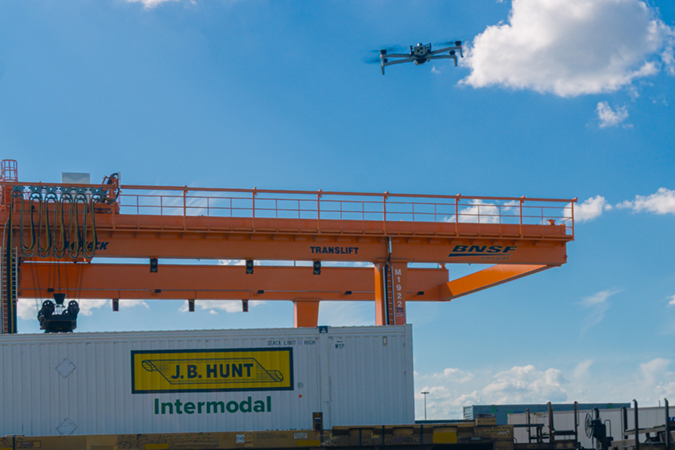
By opening the center, BNSF has created a central hub where our pilots can work together, share resources, and operate with the tools and technology they need to do their jobs safely and efficiently.
“We fly drones remotely for intermodal facilities to inventory containers and to support our Resource Protection team,” Technology Services Director John Martin said. “The Flight Operations Center helps us comply with FAA requirements, while also centralizing operations for maximum efficiency.”
The Federal Aviation Administration (FAA) requires that BVLOS drone pilots operate from a quiet space with controlled access, similar to the cockpit of an airplane. That way, pilots can focus on flying without the distractions that might compromise safety.
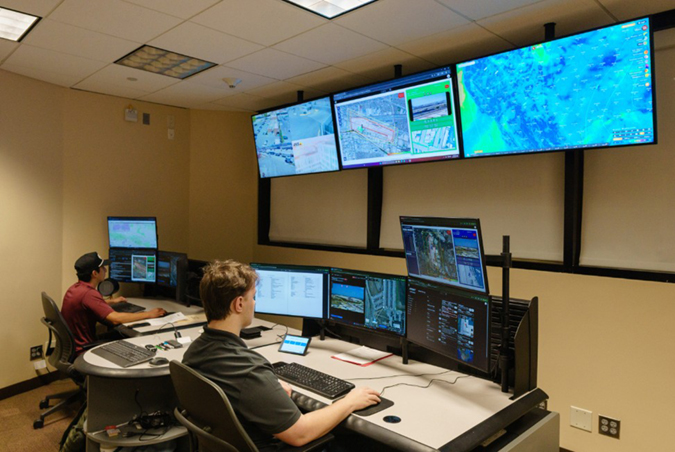
Inside the flight center, everything is designed to ensure smooth and safe drone operations. Only authorized personnel can enter, and there are strict rules during critical phases of flight, like takeoff and landing. During these moments, pilots aren’t allowed to talk, eat, or drink, ensuring their full attention is on the aircraft.
“Being within the protected bubble of our Network Operations Center gives us redundant power and internet connectivity,” said Technology Services Manager Michael Ibanez. The Network Operations Center or NOC is where dispatchers and support staff manage the flow of traffic on BNSF’s rail network.
“We're in a hardened shell, so we wouldn't need to evacuate during severe weather in Fort Worth,” Ibanez said. “This prepares us for non-disruptable operations, which is crucial as we expand across the network.”
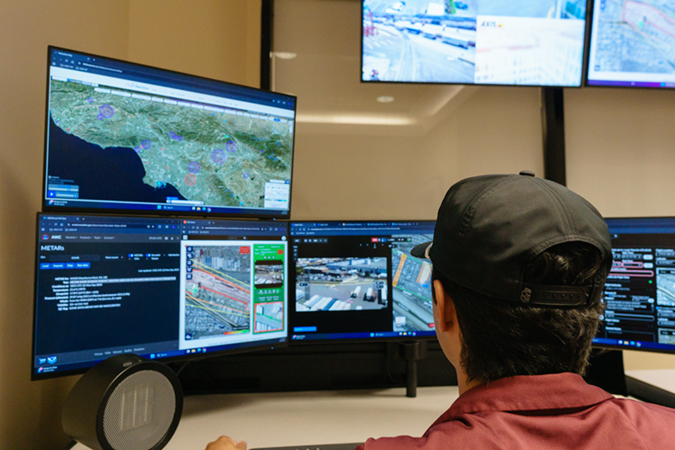
BNSF uses advanced drones capable of fully automated or semi-automated flights. These drones can launch and land using docking stations, eliminating the need for physical interaction. If a drone encounters an issue during an automated flight, a pilot takes control.
Looking ahead, BNSF is testing technology that will allow one pilot to control multiple drones simultaneously, for even greater efficiency.
With the holiday shipping season just around the corner, intermodal facilities like Hobart in Los Angeles and Alliance in Fort Worth are getting busier. The Flight Operations Center will be ready.

“We're expanding to 24-7 operations to better serve our customers during peak season,” Ibanez said. “We know how important this time is for our intermodal customers.”
Martin added, “In those intermodal yards, where there are thousands of containers, we use drones along with BNSF’s patented technology to know where every customer's container is at all times. This ensures we're moving freight through the terminal with minimal dwell time. The drones play a big role in that.”
As drone operations continue to grow, the Flight Operations Center is ready to support the company’s needs. Today, BNSF’s pilots fly more than 1,000 hours a month, but that number is expected to take off in the coming years.
“By the end of next year, we could easily see 6,000 flight hours per month,” Martin said. “The Flight Center prepares us for that growth while ensuring we stay ahead of the curve in drone innovation.”
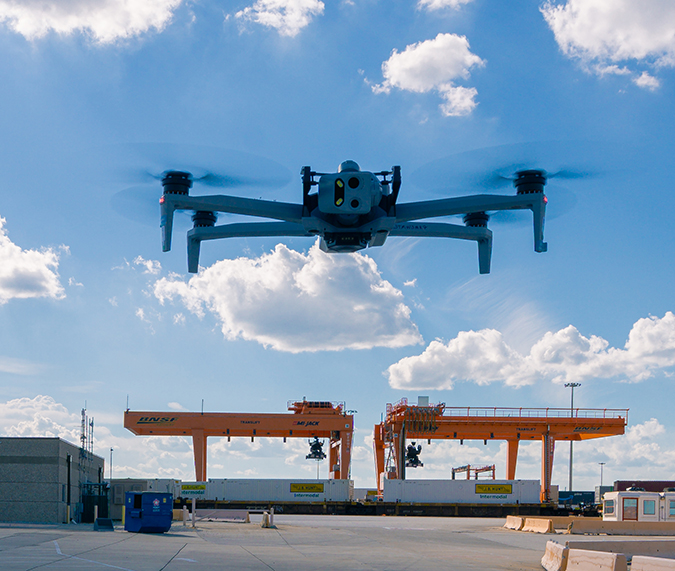
After a long hiatus, BNSF is also planning to return to its fixed-wing roots, with tests in 2026 to evaluate long-range drones that can provide up to 500 miles of coverage.
From improving safety and efficiency to supporting peak season operations, the Flight Operations Center is a great example of BNSF’s commitment to innovation. BNSF’s drones play an important role in keeping freight moving, and the Flight Operations Center is leading the formation.
